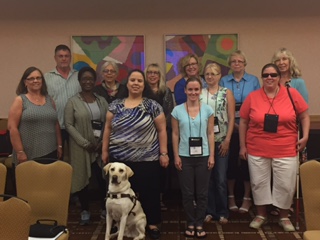Let's Go to the Movies at the AER International Conference
Our advisor Judy Matthews shares with us her experience presenting at the conference. Thank you Judy!
On Sunday, July 24th, I had the honor of presenting at the Association for the Education and Rehabilitation of the Blind and Visually Impaired (AER) International Conference. The purpose of my presentation was to inform and educate attendees regarding video description. There were several challenges:
1. The presentation was scheduled for the last slot of concurrent sessions.
2. There were some extremely interesting sessions happening at the same time.
3. Technology was doing, well, what technology usually does on the day of an important presentation.
4. There was another great presentation about video description a couple of days prior.
In spite of these obstacles, there were around 15 people at my presentation, which I considered a victory! The session was titled “Let’s Go to the Movies: A Guide to Video Description”, so it was fitting that snacks be provided. The participants were very interested and engaged, and asked many good questions. We even had a participant who resides in Israel, and she was particularly interested in the Federal Communications Commission (FCC) regulation regarding video description. Participants provided their emails, and the presentation and resource list were sent to them.
Everyone experienced firsthand the impact video description can have for someone who is sight impaired or blind. Some of the topics covered were:
• What is video description and how is it accessed
• Current FCC regulations regarding video description
• Components of quality video description
• How video description can be used in educational settings
• Resources to access and advocate for video description
I felt so privileged to be able to share information, knowledge, and resources with my colleagues and friends in the field of vision rehabilitation. My only regret was that Maria Victoria, who was initially planning to be there, was unable to make it due to circumstances beyond her control. This means we will have to plan another presentation soon—I really enjoy presenting together and it wasn’t the same without her! Stay tuned for our next one.


